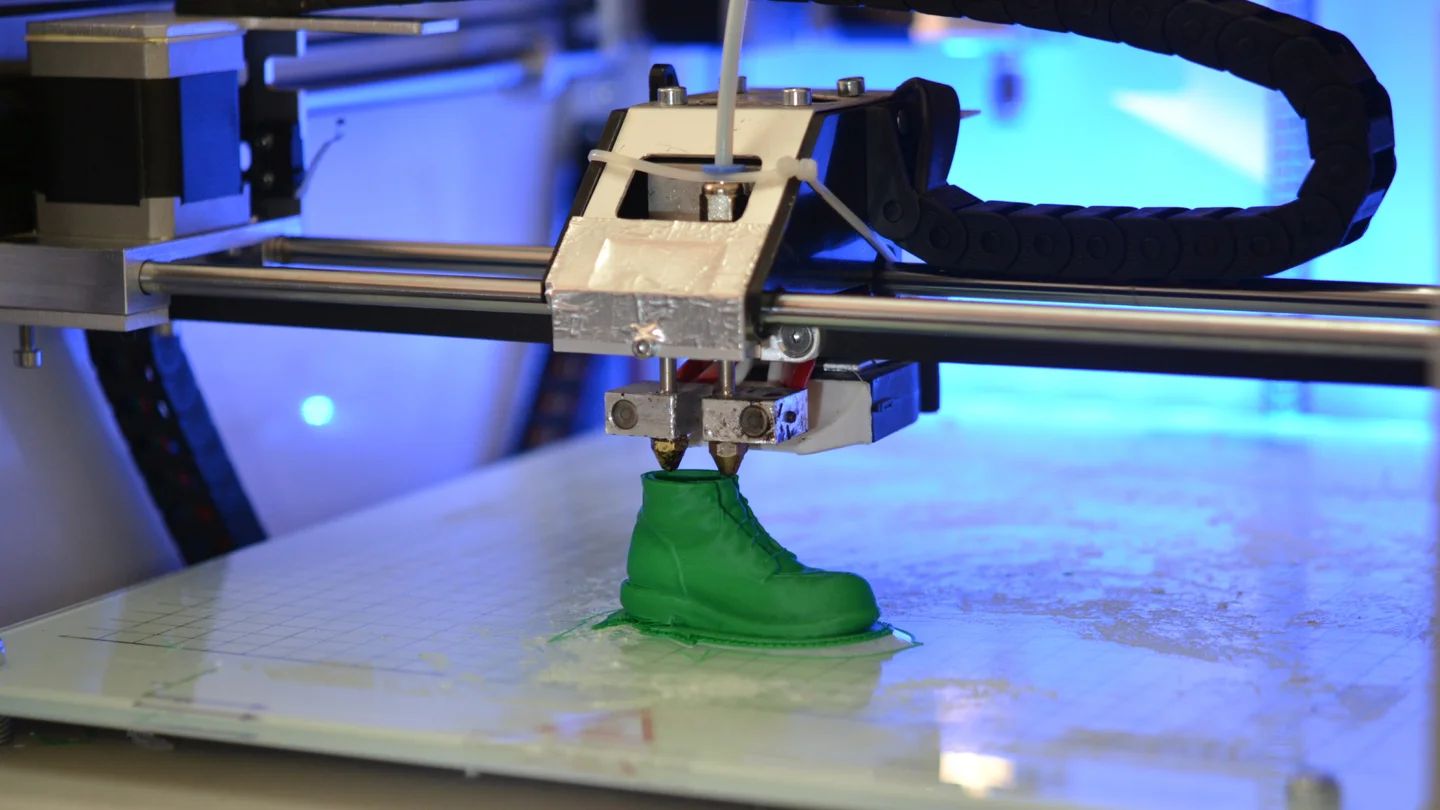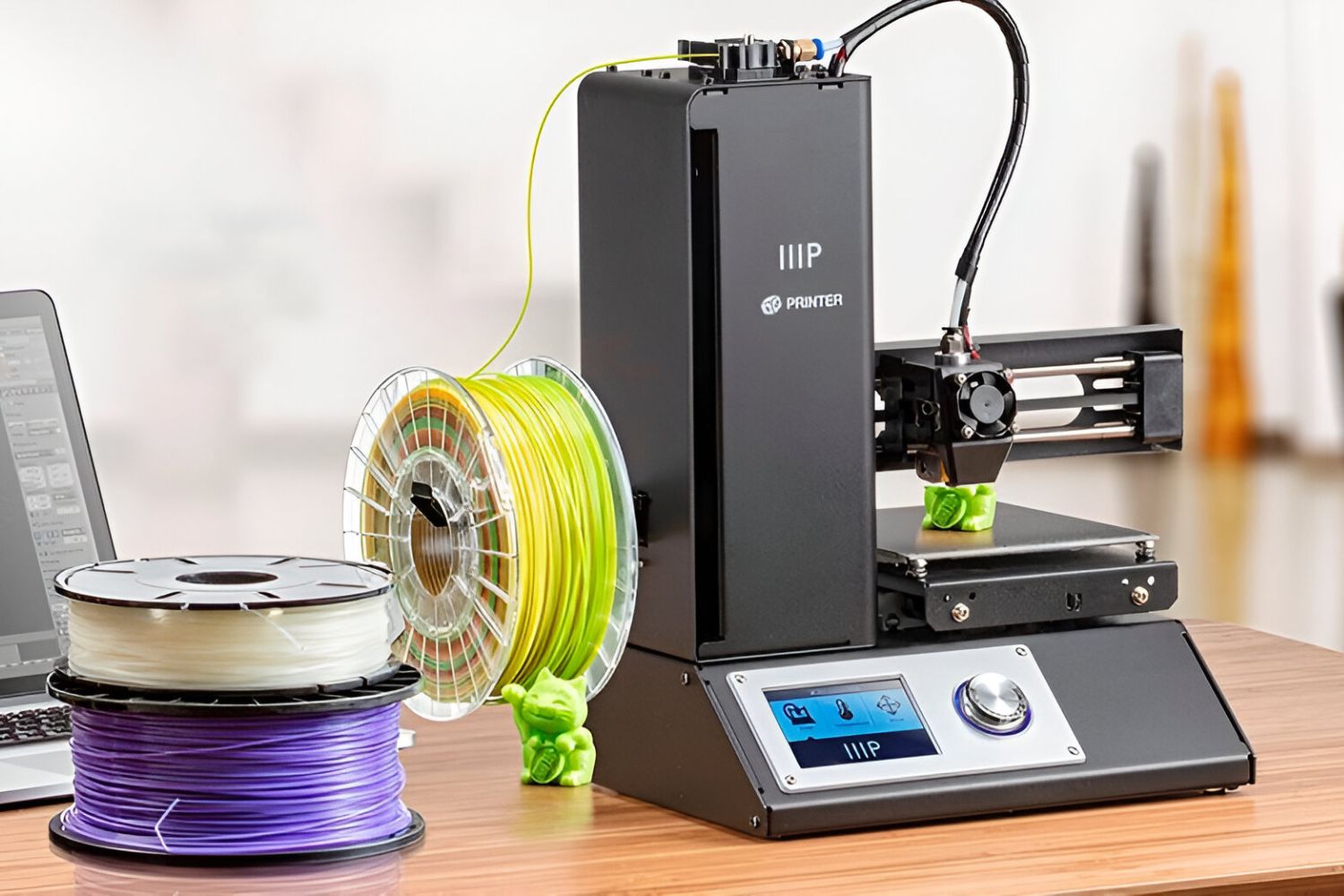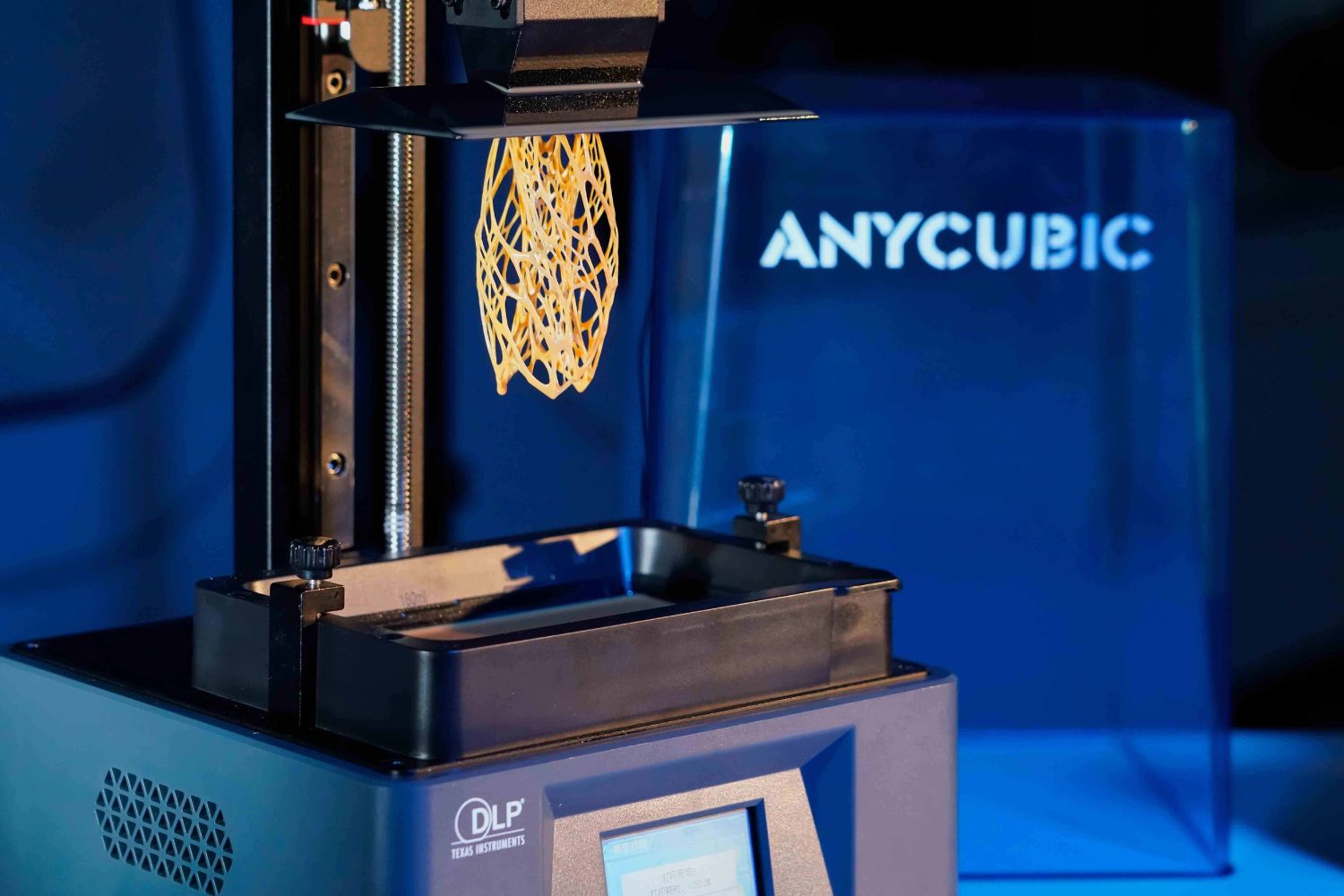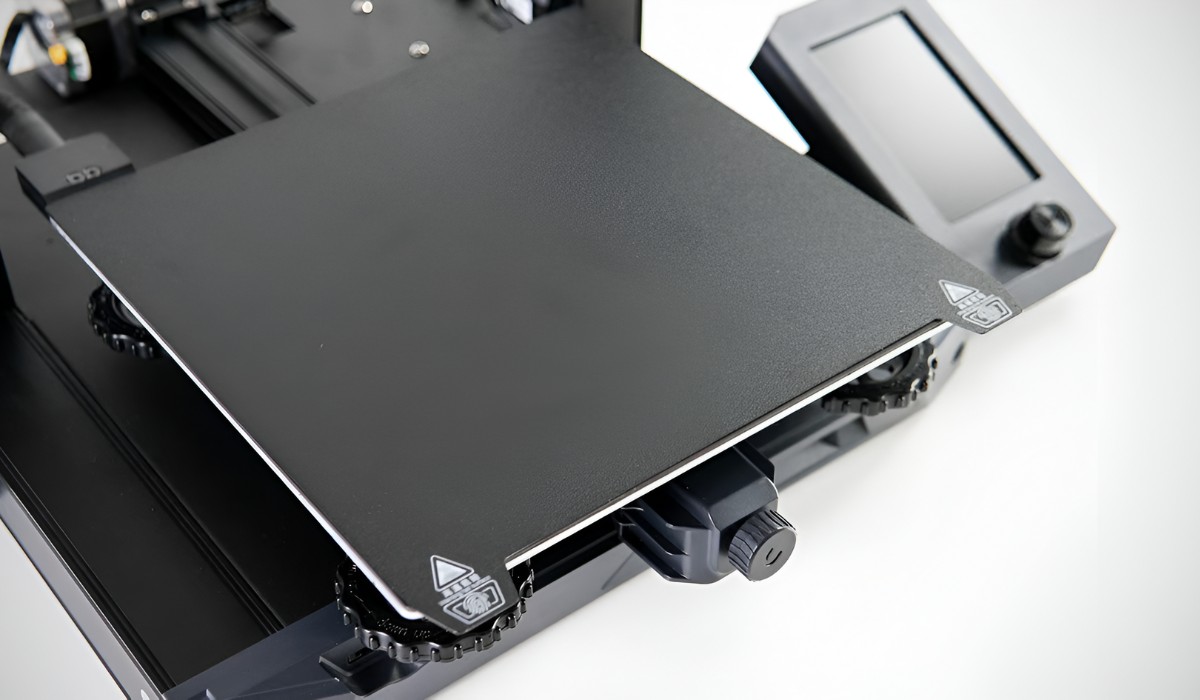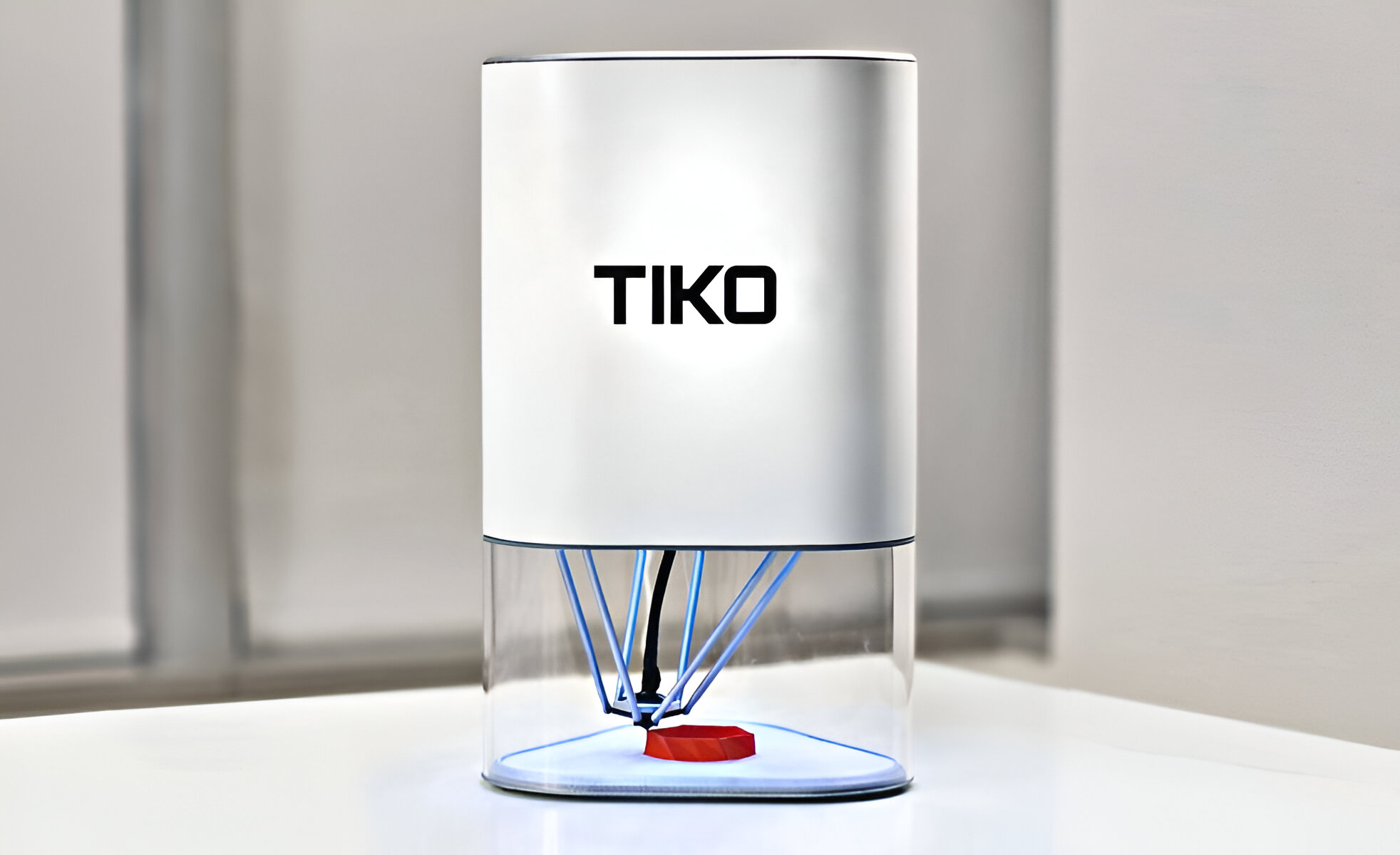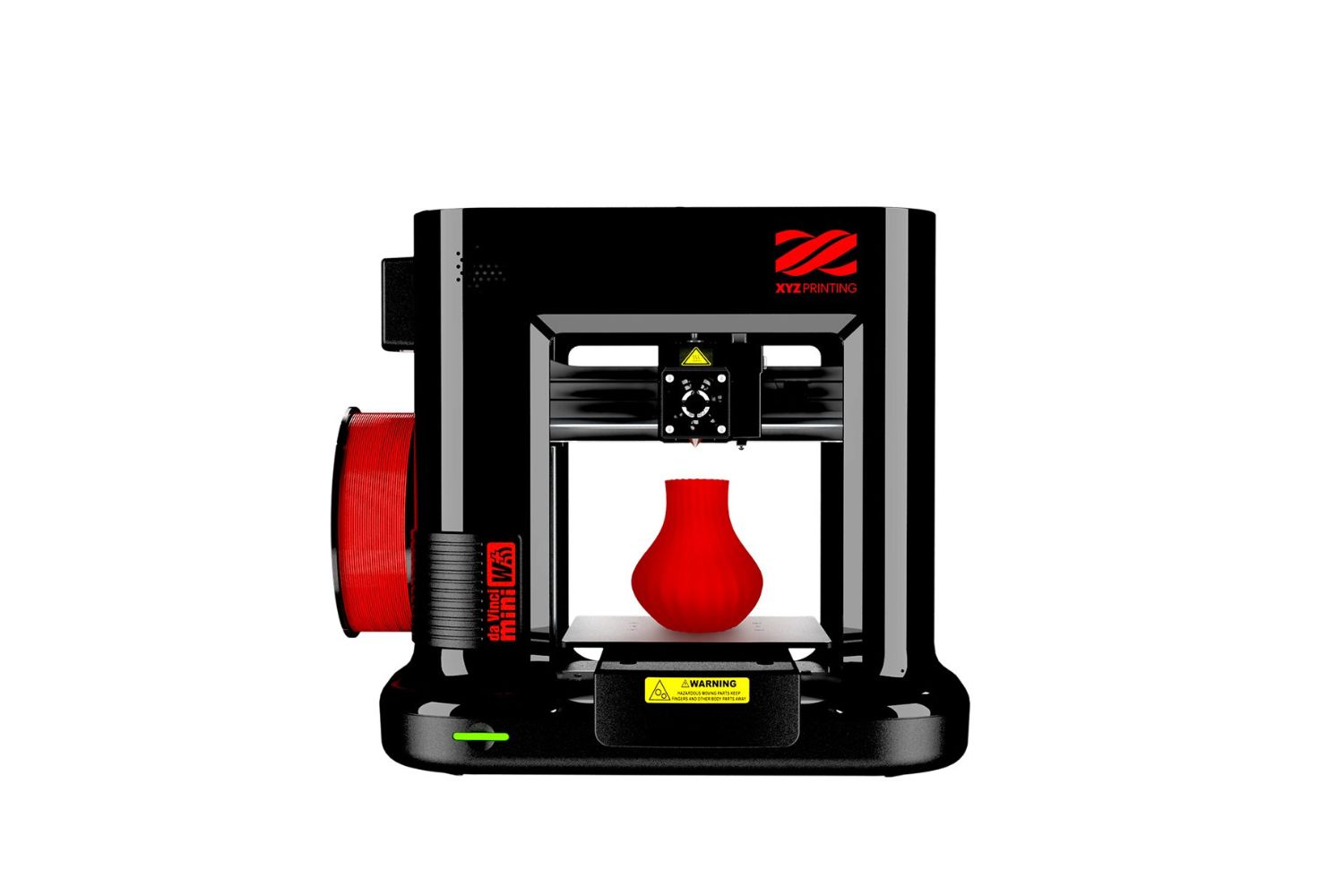Introduction
The world of technology is constantly evolving, and one such innovation that has revolutionized various industries is the 3D printer. This remarkable device has the ability to turn digital designs into physical objects, making it a game-changer in fields like manufacturing, engineering, healthcare, and even art and design. But how exactly does a 3D printer work?
In this article, we will delve into the fascinating world of 3D printing and explore its inner workings. We will discuss the different types of 3D printing technologies, the components of a 3D printer, and the step-by-step process of turning a digital model into a tangible object. Additionally, we will explore the materials used in 3D printing, the common applications of this technology, and its advantages and limitations.
At its core, a 3D printer is a machine that builds objects layer by layer, guided by a digital design. It allows for the creation of intricate and complex structures that would be nearly impossible to produce using conventional manufacturing methods. With the ability to transform a mere concept into a physical reality, 3D printing has opened up a world of possibilities and is shaping the future of how things are made.
Whether you are a technology enthusiast, a professional in a related field, or simply curious about this emerging technology, this article will provide you with an in-depth understanding of how 3D printers work. So, let’s dive into the intricacies of this innovative technology and unlock the secrets behind the magic of 3D printing.
What is a 3D Printer?
A 3D printer is a cutting-edge device that belongs to the category of additive manufacturing. Unlike traditional manufacturing methods that involve subtracting material to create an object, 3D printing builds objects layer by layer, using various materials such as plastic, metal, or even organic substances. Essentially, it takes a digital design and transforms it into a physical object by adding material in a precise and controlled manner.
One of the key features of a 3D printer is its ability to create highly intricate and complex structures with ease. It can produce objects with intricate geometries, internal cavities, and even moving parts, all in a single print. This level of precision and customization sets 3D printing apart from traditional manufacturing techniques, offering designers and engineers unprecedented freedom to create.
3D printers work by interpreting a digital design file, which is typically created using computer-aided design (CAD) software. This design file contains a three-dimensional model of the desired object, specifying its shape, dimensions, and other intricate details. The printer then reads this file and uses it as a blueprint to build the object layer by layer.
The process begins with a thin layer of material, often referred to as filament, being deposited onto the build plate or platform. The printer’s nozzle or printhead then moves along a predefined path, tracing the shape of the object’s cross-section for that specific layer. The material is heated or hardened, depending on the specific technology, as it is deposited, ensuring the layers adhere to one another and solidify to form a stable structure.
This layer-by-layer building process continues until the entire object is complete, at which point it is ready for use or post-processing, depending on the desired application. The final result is a physical object that accurately reflects the details and intricacies of the original 3D design.
It is important to note that 3D printers come in a variety of sizes, capabilities, and technologies. From desktop machines suitable for hobbyists and small-scale production to large industrial-grade printers capable of producing intricate, large-scale objects, there is a wide range of options available to suit different needs and budgets.
In the next sections, we will dive deeper into the various types of 3D printing technologies and explore the components that make up a 3D printer. By understanding these fundamentals, we can gain a better understanding of how these remarkable machines bring digital designs to life, revolutionizing industries and pushing the boundaries of what is possible.
The Basics of 3D Printing
At its core, 3D printing is a process of additive manufacturing that involves building objects layer by layer. This technique stands in contrast to subtractive manufacturing methods, where material is removed to shape an object. The concept of 3D printing has been around for several decades, but advancements in technology have made it more accessible and versatile than ever before.
The process of 3D printing typically starts with a digital model or design file that defines the shape and structure of the object. This design file is created using specialized software, such as computer-aided design (CAD) tools, or can be obtained from online repositories that offer a vast library of ready-to-print designs.
Once the design file is ready, it is transferred to the 3D printer, which then translates the digital model into a physical object. The printer achieves this by depositing material layer by layer, following the instructions encoded in the design file.
The material used in 3D printing is typically in the form of a filament or a resin. Filaments, such as thermoplastics or metals, are fed into the printer and melted at a specific temperature before being extruded through a nozzle. Resins, on the other hand, are cured using ultraviolet (UV) light or other methods.
The printer’s nozzle or printhead moves along a predefined path, tracing the shape of each layer. As the material is deposited, it cools down or solidifies, bonding with the previous layers to form a solid structure. This process is repeated layer by layer until the entire object is complete.
3D printing offers a wide range of benefits. It allows for the production of highly complex geometries and intricate designs that would be challenging or impossible to create using traditional manufacturing methods. It also enables rapid prototyping, allowing designers and engineers to quickly iterate and refine their designs before mass production.
Furthermore, 3D printing provides the flexibility to create customized and personalized objects. From prosthetics and medical implants tailored to fit an individual’s unique needs to personalized fashion items and accessories, the possibilities are endless.
While 3D printing has its advantages, it also has limitations. The speed of printing, especially for large and complex objects, can be relatively slow compared to other manufacturing methods. The size of the printable objects is also constrained by the build volume of the printer. Additionally, the quality and strength of the printed objects may vary based on factors such as the printing technology used, the material properties, and the level of expertise in setting up and operating the printer.
In the next sections, we will explore the different types of 3D printing technologies and the various components that are essential to the functioning of a 3D printer. This deeper understanding will equip us with the knowledge to make informed decisions when selecting a 3D printing technology and optimizing the printing process for desired outcomes.
The Different Types of 3D Printing Technologies
3D printing encompasses a range of technologies, each with its own unique approach and set of advantages. Here are some of the most common 3D printing technologies used today:
- Fused Deposition Modeling (FDM): This is one of the most widely used and affordable 3D printing technologies. It works by extruding a thermoplastic filament through a heated nozzle, which melts the material before depositing it layer by layer. FDM printers are known for their reliability and accessibility, making them popular among hobbyists and professionals alike.
- Stereolithography (SLA): SLA printers use photopolymer resin that is cured layer by layer using an ultraviolet laser or light source. The laser traces the cross-section of the object on the surface of the resin, solidifying it and adhering it to the previous layer. SLA printing offers high resolution and excellent surface finish, making it ideal for detailed and intricate designs.
- Selective Laser Sintering (SLS): SLS printers utilize a high-powered laser to fuse powdered materials together. The laser selectively sinters the powdered material, layer by layer, bonding it to create the desired object. SLS is known for its versatility, as it can work with a wide range of materials, including plastics, metals, and even ceramics.
- Digital Light Processing (DLP): DLP printing works similarly to SLA, but instead of using a laser, it employs a light projector to cure the resin. The projector shines a patterned light onto the liquid resin, solidifying it layer by layer. DLP printing offers fast print speeds and can produce high-resolution objects with smooth surfaces.
- Selective Laser Melting (SLM): SLM is a metal 3D printing technology that uses a high-powered laser to selectively melt metal powder, layer by layer, to create fully dense metal parts. This technology is commonly used in aerospace, automotive, and medical industries for producing complex metal components with excellent mechanical properties.
These are just a few examples of the 3D printing technologies available today. Each technology offers different capabilities, materials, and levels of precision, allowing users to choose the most suitable method for their specific applications.
It is worth noting that while these technologies have made significant advancements, the field of 3D printing is constantly evolving. Researchers and engineers are continually exploring new materials, refining existing technologies, and developing entirely new approaches to push the boundaries of what is possible.
In the next section, we will delve into the components that make up a 3D printer, providing a deeper understanding of the internal mechanisms and functionality of these remarkable machines.
Understanding the Components of a 3D Printer
A 3D printer is composed of several essential components that work together to bring the digital design to life. Let’s take a closer look at these components and their roles in the printing process.
- Frame and Structure: The frame provides the structural support for the 3D printer, ensuring stability and accuracy during the printing process. It is usually made of metal or durable plastic to withstand the stresses and vibrations associated with 3D printing.
- Extruder or Printhead: The extruder, also known as the printhead, is responsible for melting the filament and depositing it onto the build plate. It consists of a motor, a heating element, and a nozzle through which the molten material is ejected. This component determines the size and shape of the material being deposited.
- Build Plate: The build plate is the surface onto which the 3D object is built. It needs to be level, flat, and capable of withstanding the high temperatures involved in the printing process. Different materials, such as glass, aluminum, or specialized build surfaces, can be used as the build plate depending on the printer’s design and requirements.
- Motion System: The motion system includes motors, belts, pulleys, and linear guides that control the movement of the extruder and build plate. These components work together to position the extruder precisely along the X, Y, and Z axes to build the object layer by layer.
- Control Board: The control board is the brain of the 3D printer, responsible for interpreting the instructions from the design file and controlling the movement of the motors and other components. It receives signals from the computer or SD card and translates them into precise movements and temperature adjustments to achieve the desired print.
- Power Supply: The power supply provides the necessary electrical energy to operate the 3D printer. It converts the input power (AC) into a lower voltage necessary for the printer’s components to function safely and efficiently.
- Display and Interface: Many 3D printers come equipped with a display and user interface that allows users to control the printing process, adjust settings, and monitor the progress. This interface may consist of buttons, knobs, or a touchscreen for easy navigation and interaction.
- Filament Spool and Holder: The filament spool holds the filament, which is the raw material used in 3D printing. It is usually mounted on a holder and placed near the printer for easy access. The filament is fed into the extruder through a feeding mechanism, which ensures a consistent supply of material during printing.
These are the fundamental components that make up a 3D printer. Depending on the specific printer model and its intended use, there may be additional features and components, such as cooling fans, sensors, or automatic bed leveling systems. Understanding the functionality of these components is crucial for properly operating and maintaining a 3D printer and achieving successful 3D prints.
Now that we have explored the components of a 3D printer in detail, let’s dive into the exciting process of how a 3D printer actually works, from the input of a digital design to the output of a physical object.
How Does a 3D Printer Work?
A 3D printer works by combining sophisticated technology and precise movements to transform a digital design into a physical object. While the specifics may vary depending on the type of printer and printing technology used, the general principles remain the same. Let’s explore the step-by-step process of how a 3D printer operates.
- Digital Design: The process starts with a digital design file of the desired object. This design file can be created using computer-aided design (CAD) software or obtained from online repositories that offer a wide range of pre-designed models.
- Slicing: The design file is then processed through slicing software that divides the object into numerous thin layers, each with its own digital representation. This software calculates the path the printer’s extruder or printhead should follow to create each layer.
- Preparation: Once the object is sliced into layers, the printer needs to be prepared for printing. This includes activities like leveling the build plate, ensuring proper filament feeding, and setting other parameters such as printing temperature and speed.
- Printing: With the printer prepared, the actual printing process begins. The printer’s nozzle or printhead starts depositing the material, layer by layer, onto the build plate, following the instructions from the sliced design file. This process continues until the entire object is complete.
- Cooling and Solidifying: Depending on the material being used, the printed layers may require some time to cool and solidify before the printer moves on to the next layer. This is important to ensure proper adhesion between layers and maintain the structural integrity of the printed object.
- Support Structures: In some cases, support structures may be required to provide stability for overhanging or complex parts of the object. These structures are typically printed alongside the object and can be removed or dissolved once printing is complete.
- Post-Processing: After the printing is finished, there may be additional post-processing steps required, depending on the desired outcome. This can include removing support structures, sanding, painting, or applying other finishing touches to enhance the appearance and functionality of the printed object.
It is important to note that the time required for 3D printing can vary significantly, depending on factors such as the size and complexity of the object, the chosen printing technology, and the desired level of detail and quality.
Understanding the step-by-step process of how a 3D printer works allows users to optimize their printing workflow, troubleshoot any issues that may arise, and make informed decisions when selecting the appropriate printing parameters and materials.
Now, let’s explore the types of materials used in 3D printing and how they contribute to the final output of a printed object.
Step-by-Step Process of 3D Printing
The process of 3D printing involves several sequential steps, each contributing to the creation of a physical object from a digital design. While specific details may vary depending on the printer and technology used, the general steps remain consistent. Let’s explore the step-by-step process of 3D printing.
- Design: The process begins with the creation or acquisition of a digital design file. This file serves as the blueprint for the object to be printed and can be generated using computer-aided design (CAD) software or obtained from online repositories that offer a vast library of ready-to-print designs.
- Preparation: The design file is imported into slicing software, which prepares it for the 3D printing process. Preparatory steps include selecting the appropriate printing parameters, such as layer thickness, printing speed, and infill density. The software then slices the digital model into numerous thin layers, generating the instructions for the printer to follow.
- Setup: Before printing, the 3D printer needs to be properly set up. This involves ensuring the build plate is level, inserting the correct filament material, and ensuring the printer is calibrated for optimal performance.
- Printing: With the setup complete, the 3D printer begins the printing process. The printer’s extruder or printhead deposits the melted filament onto the build plate, following the instructions from the sliced design file. Layer by layer, the printer builds the object based on the digital design.
- Cooling and Solidifying: As each layer is deposited, the material needs time to cool and solidify to maintain its structural integrity. Depending on the material properties and the printer’s settings, cooling can occur naturally or with the help of cooling fans. Proper cooling ensures that subsequent layers adhere well and results in a stable final object.
- Support Structures: In cases where the design includes overhangs or complex geometries, support structures may be necessary to ensure stability during the printing process. These structures are printed alongside the object and can be removed or dissolved once the printing is complete.
- Finishing: After the printing process is finished, the printed object may require post-processing. This can involve removing support structures, sanding rough surfaces, or applying additional finishing techniques like painting or smoothing to enhance the final appearance and functionality of the object.
Throughout the entire process, it is important to monitor the print to ensure proper execution and address any issues that may arise, such as filament jams or layer adhesion problems. By following these step-by-step procedures and making any necessary adjustments, users can achieve high-quality, successful 3D prints.
Now that we have explored the step-by-step process of 3D printing, let’s delve into the various filaments and materials used in this revolutionary technology.
Filaments and Materials Used in 3D Printing
The world of 3D printing offers a wide range of materials and filaments that can be used to create objects with varying properties and characteristics. The choice of material depends on factors such as the desired strength, flexibility, heat resistance, and aesthetics of the printed object. Let’s explore some of the commonly used filaments and materials in 3D printing.
- Polylactic Acid (PLA): PLA is a popular choice for 3D printing due to its ease of use, low cost, and biodegradability. It is derived from renewable resources such as cornstarch or sugarcane and offers good strength and dimensional accuracy. PLA is widely used for printing prototypes, hobbyist projects, and consumer goods.
- Acrylonitrile Butadiene Styrene (ABS): ABS is a strong and durable thermoplastic known for its impact resistance and ability to withstand higher temperatures. It is commonly used for functional parts, automotive components, and electronic enclosures. However, ABS emits fumes during printing and requires a heated build plate to minimize warping.
- Polyethylene Terephthalate Glycol (PETG): PETG combines the strength and durability of ABS with the ease of printing of PLA. It offers excellent layer adhesion, low shrinkage, and good chemical resistance. PETG is often used for food-safe containers, mechanical parts, and prototypes that require enhanced durability.
- Nylon: Nylon is a versatile material known for its high strength, flexibility, and durability. It offers good resistance to wear, chemicals, and heat. Nylon is widely used in engineering applications, such as gears, bearings, and functional prototypes that require mechanical strength. However, nylon can be challenging to print due to its moisture absorption and higher printing temperature requirements.
- Polyvinyl Alcohol (PVA): PVA is a water-soluble filament that is mainly used as a support material for complex prints with overhangs or intricate geometries. It provides excellent support during printing and can be dissolved in water, leaving the final object clean and without any visible supports.
- Metal Filaments: Metal-infused filaments allow for the production of metal-like objects through a process known as metal filament 3D printing. These filaments consist of a base material, such as PLA or ABS, blended with metal powders like copper, bronze, or stainless steel. After printing, the object can be polished and finished to achieve a metallic appearance.
- Resins: In addition to filaments, 3D printing can be done with liquid resins. Resin-based 3D printing, known as stereolithography (SLA) or digital light processing (DLP), offers high levels of detail and precision. Resins are available in various formulations, including standard, flexible, castable, and biocompatible, catering to a wide range of applications.
These are just a few examples of the materials and filaments commonly used in 3D printing. It’s important to consider the specific requirements of your project, including mechanical properties, surface finish, and post-processing capabilities when choosing the right material for your 3D prints.
Understanding the characteristics and capabilities of different materials empowers 3D printing enthusiasts to select the most appropriate material for their specific application, opening up a world of endless possibilities.
In the next section, we will explore the diverse applications of 3D printing across various industries and sectors, showcasing the versatility and potential impact of this technology.
Common Applications of 3D Printing
3D printing has found its way into numerous industries, revolutionizing the way things are designed, prototyped, and manufactured. From aerospace and healthcare to fashion and art, the applications of 3D printing are vast and varied. Let’s explore some of the common areas where 3D printing is making a significant impact.
- Prototyping: 3D printing has become an invaluable tool for rapid prototyping. It allows designers and engineers to quickly iterate and refine their designs, reducing the time and cost traditionally associated with prototype development. By 3D printing prototypes, companies can test the functionality and aesthetics of their products before moving forward with mass production.
- Manufacturing Tools and Parts: 3D printing is increasingly used to create custom tools, jigs, and fixtures for manufacturing processes. These specialized tools can improve efficiency, reduce costs, and enhance production capabilities. Additionally, 3D printing offers the flexibility to produce low-volume manufacturing runs of parts that may no longer be in production or are too expensive using traditional methods.
- Medical and Dental Applications: 3D printing has revolutionized healthcare by enabling the production of custom medical devices, implants, and prosthetics. This technology allows for personalized healthcare solutions that perfectly fit a patient’s unique anatomical requirements. Surgeons also benefit from 3D-printed anatomical models for pre-surgical planning and training purposes.
- Architectural Models: Architects and designers utilize 3D printing to create accurate and detailed scale models of buildings and structures. These models help visualize the designs, identify potential structural issues, and communicate concepts to clients more effectively. By 3D printing architectural models, professionals can save time and resources compared to traditional model-making techniques.
- Education and Research: 3D printing has become a valuable tool in education and research, allowing students and researchers to bring their ideas to life and explore complex concepts in a tangible way. From creating visual aids and educational models to conducting experiments and producing prototypes, 3D printing enhances the learning experience and pushes the boundaries of innovation.
- Consumer Goods and Personalization: 3D printing enables customization and personalization of consumer goods. From personalized jewelry and fashion accessories to custom-designed phone cases and home decor, individuals can express their unique style and preferences through 3D printing. Customization also extends to personalized gifts, creating one-of-a-kind items that hold sentimental value.
- Art and Design: Artists and designers are using 3D printing to push the boundaries of creativity and bring unique visions to life. This technology allows for the creation of intricate sculptures, detailed artwork, and even functional art pieces. 3D printing opens up new possibilities for artists to experiment with shapes, textures, and materials, expanding the realm of artistic expression.
These are just a few examples of the diverse applications of 3D printing. The technology continues to evolve, and its reach extends to countless other industries, ranging from food and fashion to automotive and aerospace. As 3D printing becomes more accessible and advanced, the possibilities for innovation and problem-solving are endless.
In the next section, we will explore the advantages and limitations of 3D printing, providing a balanced view of this transformative technology.
Advantages and Limitations of 3D Printing
3D printing offers a range of advantages that have made it increasingly popular across various industries. However, it also has its limitations that need to be considered. Let’s explore the advantages and limitations of 3D printing in more detail.
Advantages of 3D Printing
- Design Freedom: 3D printing enables complex geometries, intricate details, and customization that are difficult or impossible to achieve with traditional manufacturing methods. Designers have the freedom to create unique and innovative objects without the constraints of traditional manufacturing processes.
- Rapid Prototyping: 3D printing allows for the quick and cost-effective production of prototypes. It accelerates the product development process, enabling designers to iterate and test their designs before moving to mass production. This speeds up time-to-market and reduces the risk of costly errors.
- On-Demand Manufacturing: 3D printing enables decentralized and on-demand manufacturing. Rather than mass-producing and warehousing products, items can be produced as needed, reducing waste and inventory costs. This is particularly beneficial for low-volume production runs or markets with niche demands.
- Customization and Personalization: 3D printing opens the door to personalized and customized products. From customized fashion accessories to tailor-made medical prosthetics, objects can be designed and produced to meet individual needs and preferences. This level of customization offers enhanced user experiences and fosters customer satisfaction.
- Complexity and Lightweight Structures: 3D printing enables the creation of lightweight structures and intricate designs with internal cavities and optimized lattices. This can lead to reduced material consumption, improved efficiency, and enhanced performance in various industries, such as aerospace, automotive, and robotics.
Limitations of 3D Printing
- Printing Speed: 3D printing can be a time-consuming process, especially for large and complex objects. The layer-by-layer nature of 3D printing can result in relatively slow print speeds compared to other manufacturing methods.
- Size and Scale Limitations: The size of printable objects is limited by the build volume of the printer. Larger objects may need to be printed in multiple parts and assembled later, which can affect the structural integrity and surface finish.
- Material Properties: Different 3D printing materials have varying properties, such as strength, heat resistance, and flexibility. It is important to select the appropriate material for the desired application. Some materials may have limitations in terms of mechanical strength or long-term durability.
- Post-Processing Requirements: Depending on the desired outcome, 3D-printed objects may require post-processing, such as support structure removal, sanding, or painting, to achieve the desired finish. Post-processing can add time, effort, and additional costs to the overall printing process.
- Skills and Expertise: Successfully 3D printing complex objects requires a certain level of knowledge and expertise. Operating the printer, preparing models for printing, and optimizing print settings can involve a learning curve that may require time and effort to master.
Understanding the advantages and limitations of 3D printing is crucial for aligning expectations and making informed decisions. With continuous advancements in technology, research, and material development, the limitations of 3D printing are being continually addressed and overcome, expanding the scope of possibilities.
In the next section, we will provide some tips and best practices for successful 3D printing, helping you achieve high-quality results with your own 3D printer.
Tips for Successful 3D Printing
To achieve high-quality 3D prints, it’s important to follow some best practices and consider certain factors that can contribute to successful outcomes. Here are some tips to help you achieve successful 3D printing results:
- Calibrate Your Printer: Proper calibration ensures accurate printing and improves the overall quality of your prints. Calibrate the build plate level, nozzle height, and extrusion flow rate to ensure optimal performance.
- Choose the Right Settings: Adjust the print settings to match the specific requirements of your print. Consider factors such as layer height, infill density, print speed, and support structures to achieve the desired level of detail, strength, and surface finish.
- Use High-Quality Filament: High-quality filament can make a significant difference in print outcomes. Choose filament from reputable manufacturers known for consistent quality and precise diameter. Properly store the filament to avoid moisture absorption, which can negatively impact print quality.
- Optimize the Design: Optimize your 3D model to ensure it is printable and suitable for the chosen printing technology. Consider factors such as wall thickness, overhangs, and support structures to improve printability and reduce the likelihood of issues during printing.
- Ensure Proper Cooling: Adequate cooling is essential to maintain the shape and structure of printed layers. Ensure that your printer has proper cooling mechanisms, such as cooling fans or heat sinks, and adjust the cooling settings if needed to prevent warping or deformation of the printed object.
- Monitor the Print: Keep a close eye on the printing process, especially during the initial stages, to detect any issues early on. Check for proper filament flow, layer adhesion, and overall print quality. Make any necessary adjustments during the printing process to ensure a successful outcome.
- Practice Proper Bed Adhesion: Ensuring proper bed adhesion is crucial for preventing print failures caused by warping or detachment from the build plate. Use adhesion aids such as adhesive sprays, specialized build surfaces, or a heated bed. Experiment with different adhesion methods to find what works best for your printer and materials.
- Post-Process if Needed: Depending on your requirements, post-processing may be necessary to achieve the desired finish. This can include removing support structures, sanding or polishing rough surfaces, or applying coatings or paints. Take your time and follow appropriate post-processing techniques to enhance the aesthetics and functionality of your printed object.
- Continuous Learning and Improvement: Embrace the learning process and continually seek ways to improve your 3D printing skills. Stay up to date with the latest advancements in technology, software, and materials. Engage with online communities, forums, and resources to learn from others and share your experiences.
By following these tips and incorporating them into your 3D printing process, you can increase the chances of achieving successful and high-quality prints. Don’t hesitate to experiment, learn from your failures, and adapt your approach as you gain more experience in the exciting world of 3D printing.
In the final section, we will summarize the key points discussed in this article and highlight the transformative potential of 3D printing in various industries and creative endeavors.
Conclusion
In conclusion, 3D printing has revolutionized manufacturing and design, offering a wide range of possibilities and advantages across various industries. With its ability to transform digital designs into physical objects, 3D printing has become a powerful tool for prototyping, customization, and on-demand manufacturing.
We explored the basics of 3D printing, including the different technologies and components involved in the printing process. From the extruder and build plate to the control board and slicing software, each component plays a crucial role in bringing a digital design to life.
We also discussed the various materials and filaments used in 3D printing, highlighting their distinct properties and applications. From PLA and ABS to nylon and metal-infused filaments, the wide range of materials allows for versatility and customization in the printed objects.
Additionally, we explored the common applications of 3D printing, ranging from rapid prototyping and manufacturing tools to medical devices and personalized consumer goods. The ability of 3D printing to create complex geometries, customize designs, and enable low-volume production is transforming industries and opening up new opportunities for innovation.
While 3D printing offers numerous advantages, it also has limitations to consider, such as printing speed, size limitations, and material properties. However, ongoing advancements in technology and material development are constantly pushing the boundaries of what is possible in the world of 3D printing.
By following best practices, optimizing print settings, and continuously learning and improving, individuals can achieve successful 3D printing outcomes. The ability to calibrate the printer, choose the right settings and filaments, and monitor the print process ensures high-quality results and efficient printing.
In summary, 3D printing is an innovative and transformative technology that has the potential to revolutionize manufacturing, design, and various other sectors. With its ability to create complex and customized objects, 3D printing is paving the way for new possibilities and reshaping the future of production.







